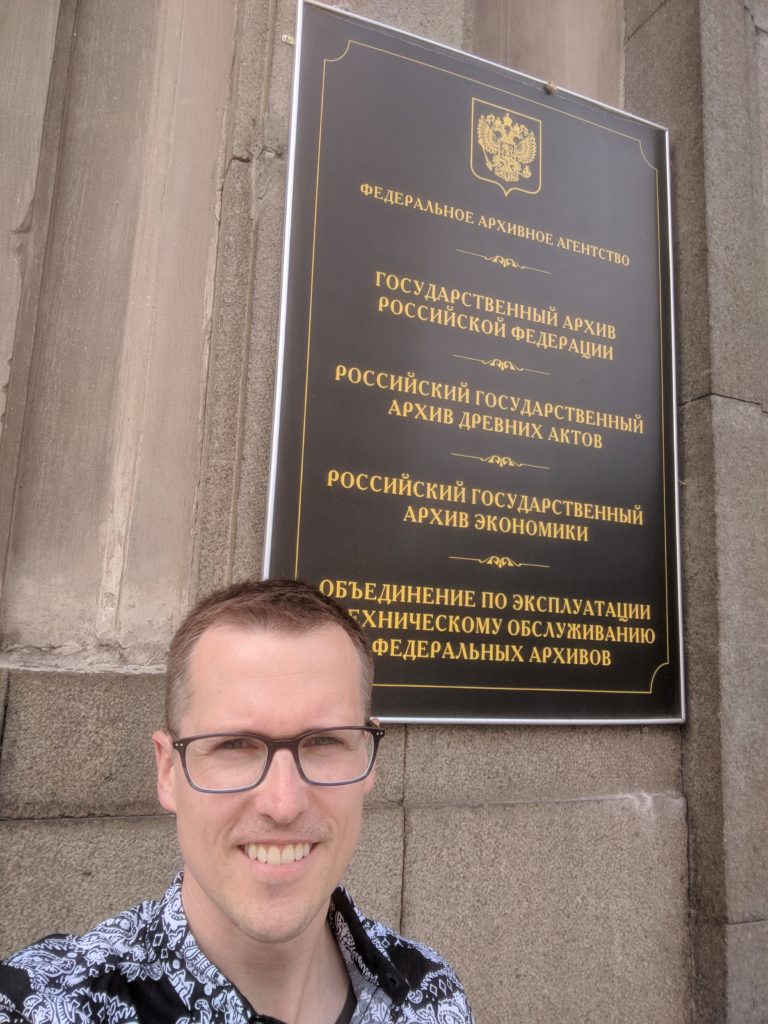
For the 2018–19 academic year, Paul Behringer, a Ph.D. student in the History Department, was awarded the prestigious Ernest May Fellowship in History and Policy at the Belfer Center for Science and International Affairs, which is housed in Harvard University’s Kennedy School. As part of the Belfer Center’s commitment to making historical research relevant for policymakers, Behringer is using his time at Harvard to hone his understanding of American military intervention in Siberia during the Russian civil war. Behringer’s dissertation, “U.S. and Japanese Intervention during the Russian Civil War: Violence and Barbarism in the Far East,” is the first in-depth study to examine both the actions and perceptions of complex developments on the ground from the tripartite perspective of American, Russian, and Japanese policymakers. The Japanese role, in particular, has often been marginalized in previous accounts of the war. “Although plenty has been written on the American intervention in the context of U.S.-Russia bilateral relations,” Behringer says, “no one has written a full-length treatment that takes Japan’s role into account. Whereas the Americans sent in about 10,000 soldiers, who were mainly tasked with guarding the railroads, the Japanese dispatched over 70,000 and engaged in combat operations.” The Japanese also stayed in Siberia much longer: while the Americans pulled out in 1920, the Japanese didn’t leave the Russian mainland until 1922.

In his quest to narrate a fuller picture of the Russian civil war in Siberia, Behringer has traveled throughout the world in search of rarely consulted archival material. In addition to files held at the National Archives, Library of Congress, Stanford, Columbia, Princeton, and Harvard, he has also examined papers and reports in the National Diet Library in Tokyo. In Russia, he has obtained access to archives as far afield as Vladivostok, Khabarovsk, Chita, in addition to Moscow. Amid such a large amount of historical data, Behringer continues to be fascinated by the unexpected twists and turns of history, particularly when they can be illustrated by the dramatic life stories of individual people. To Behringer, one of the most fascinating figures is Grigorii Semenov, a Buriat Cossack who first saw combat duty on the Eastern Front during World War I. When the Russian civil war broke out, however, Semenov, with Japanese assistance, managed to establish a short-lived anti-Bolshevik state based in the Siberian city of Chita. When the Japanese withdrew their armies in 1922, Semenov fled to the United States, only to return to Japanese-held Manchuria, where he was finally captured and executed by the Soviets after World War II. “I think his story is a great metaphor for the strange twists and turns of the Russian Civil War and foreign intervention and its lasting impact on Northeast Asia,” Behringer observed.
As part of his research in Russia, Behringer spent six months living in the far eastern city of Vladivostok, just across the border from North Korea. He believes that living in the places that he studies makes history come alive in a way that is otherwise unattainable. “It was important for me to live in Vladivostok to get a better sense how people experienced the intervention there a hundred years ago,” he says. “I know what it’s like to have hiked its steep hills, and I’ve felt the piercing wind and seen the mist rising off the frozen Golden Horn on a sunny winter morning. I’ve been to the train station, which is still standing from the period, and walked down the streets where American and Japanese soldiers marched on parade.” Behringer currently expects to complete his dissertation in Spring 2020.